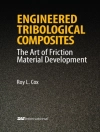There is increasing interest in the potential of UAV (Unmanned
Aerial Vehicle) and MAV (Micro Air Vehicle) technology and their
wide ranging applications including defence missions,
reconnaissance and surveillance, border patrol, disaster zone
assessment and atmospheric research. High investment levels from
the military sector globally is driving research and development
and increasing the viability of autonomous platforms as
replacements for the remotely piloted vehicles more commonly in
use.
UAV/UAS pose a number of new challenges, with the autonomy and
in particular collision avoidance, detect and avoid, or sense and
avoid, as the most challenging one, involving both regulatory and
technical issues.
Sense and Avoid in UAS: Research and Applications covers
the problem of detect, sense and avoid in UAS (Unmanned Aircraft
Systems) in depth and combines the theoretical and application
results by leading academics and researchers from industry and
academia.
Key features:
* Presents a holistic view of the sense and avoid problem in the
wider application of autonomous systems
* Includes information on human factors, regulatory issues and
navigation, control, aerodynamics and physics aspects of the
sense and avoid problem in UAS
* Provides professional, scientific and reliable content that is
easy to understand, and
* Includes contributions from leading engineers and researchers
in the field
Sense and Avoid in UAS: Research and Applications is an
invaluable source of original and specialised information. It acts
as a reference manual for practising engineers and advanced
theoretical researchers and also forms a useful resource for
younger engineers and postgraduate students. With its credible
sources and thorough review process, Sense and Avoid in UAS:
Research and Applications provides a reliable source of information
in an area that is fast expanding but scarcely covered.
Sobre el autor
Plamen Parvanov Angelov, Lancaster University, UK
Plamen Parvanov is a senior lecturer in the School of Computing and Communications at Lancaster University. He is an Associate Editor of three international journals and the founding co-Editor-in-Chief of the Springer journal Evolving Systems. He is also the Vice Chair of the Technical Committee on Standards, Computational Intelligence Society, IEEE and co-Chair of several IEEE conferences. His research in UAV/UAS is often publicised in external publications, e.g. the prestigious Computational Intelligence Magazine; Aviation Week, Flight Global, Airframer, Flight International, etc. His research focuses on computational intelligence and evolving systems, and his research in to autonomous systems has received worldwide recognition. As the Principle Investigator at Lancaster University for a team working on UAV Sense and Avoid fortwo projects of ASTRAEA his work was recognised by ‘The Engineer Innovation and Technology 2008 Award in two categories: i) Aerospace and Defence and ii) The Special Award which is an outstanding achievement.












